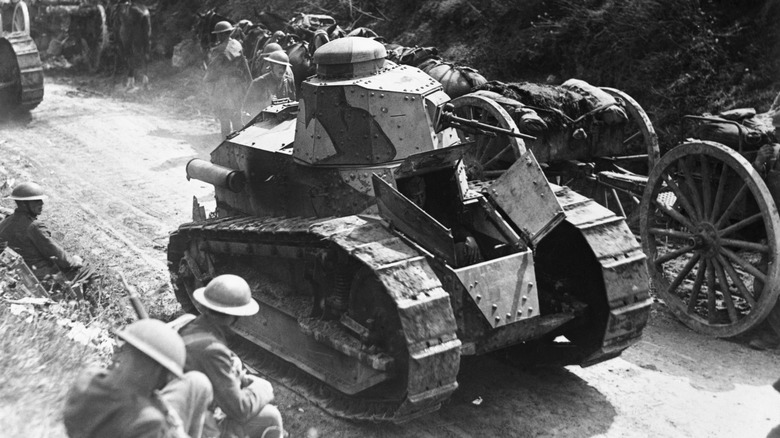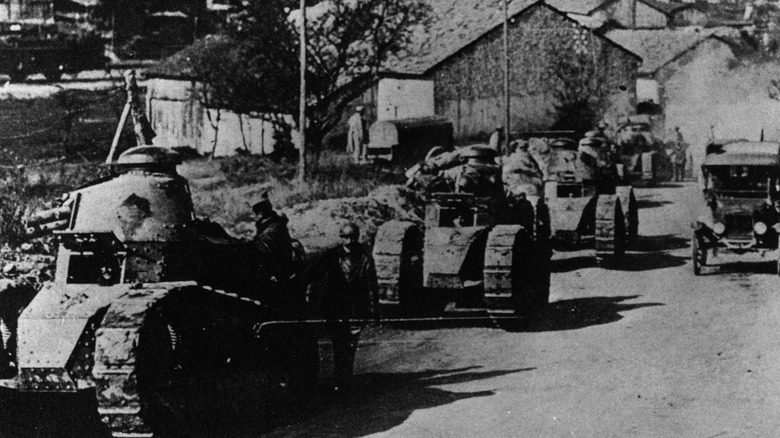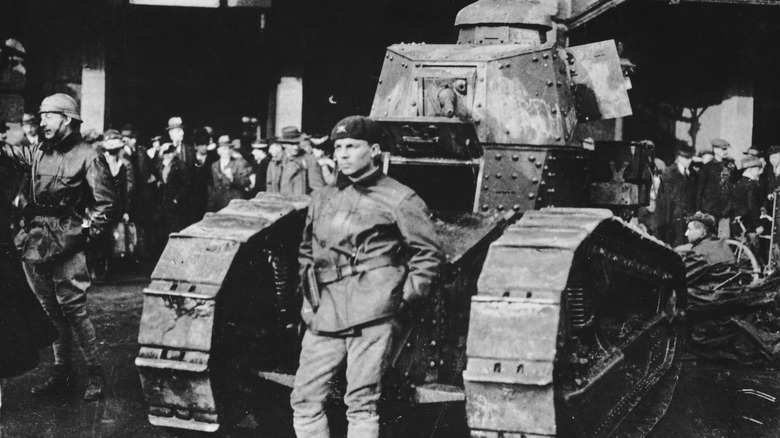These French Tanks Defied The Odds In World War I
The First World War brought upon many technological advancements that changed warfare forever, from fighter planes that took the war to the skies to chemical weapons to the introduction of armored tanks that could rain down fire on the enemy without having the vulnerability of cavalry.
Though American, British, and German inventions are well known when it comes to airplanes and tanks, particularly in the evolution from WWI to WWII tanks, the French also gave us an armored tank that defied the odds and changed warfare forever, and it did so at the very end of The Great War.
Today, Renault is known for popular cars, becoming the epitome of French carmaking. Renault is also involved in sports cars, being a big part of Formula One and racing for decades. If you were to ask the German army that marched on north France in 1918, however, they'd probably associate Renault with defeat and carnage, as Renault's FT tanks helped turn the tide on the western front.
A game-changer
The FT is considered the world's first modern tank. It was designed by Renault founder Louis Renault himself, as well as French General Jean Baptiste Eugène Estienne. Estienne asked Renault to build a lighter tank than the slow and heavier tanks in service at the time.
The tank featured a 4.5-liter four-cylinder Renault engine, which made it fast for an armored vehicle of the time. It also pioneered several features that are still used today, like having a turret that could spin 360 degrees, a driver sitting at the front of the tank, and the engine located in a separate compartment in the rear.
For Renault, the most important feature of the FT tank was its smaller and lighter frame that would allow a battalion of them to spread out and attack the enemy from behind as cavalry would.
The Renault FT-17 Light Tank was officially used in combat in May of 1918, at a time when the war was coming to an end and Germany was nearly defeated. As David Willey, curator of The Tank Museum in Dorset, England, told Wired, the tank had a psychological effect on the enemy. Its mere appearance would give "demoralized German troops an excuse to surrender."
The start of an era
Indeed, the FTs' success and mobility led to the production of over 3,000 of them — at a time when the German army was shattering, and their retreat allowed for open warfare where the FTs could maneuver easily.
"It's part of that final nail in the coffin for the Germans," David Willey, curator at the Bovington Tank Museum, told the BBC, "They are being blockaded by the British and running out of fuel and food. When you started to see the German memoirs in the 1920s asking the question 'why did we lose,' the tank was always mentioned."
The FT tank proved to be not just a big hit, with production increasing late in the war and the tank being exported to many countries, including Spain, Iran, Japan, Belgium, and Yugoslavia, including over 1,000 American copies being built. It also proved to be hugely influential. Today, over 100 years after the FT debuted in the field, its design lives on in modern tanks, including having the engine tucked away in the back while the crew compartment sat in the front.


